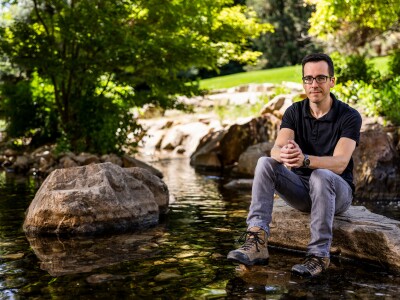- Nearly all the dinosaur bones in a quarry near Moab, Utah are fractured
- Analyzing the nature of each break, BYU researchers concluded that the fresh carcasses were trampled by huge plant-eating dinos
- The bones are now housed on BYU's campus at the museum immediately west of the football stadium
Imagine the gruesome sound of bones snapping as a thirsty, 30-ton dinosaur tramples a heap of fresh carcasses on his way to a rapidly shrinking lake.
That’s the scene revealed by a painstaking analysis of thousands of bones unearthed near Moab, Utah by geologists from Brigham Young University.
So far the researchers have identified 67 individual dinosaurs representing 8 species – and they have only scratched the surface of this diverse quarry. Mysteriously, nearly all of the 4,200 bones recovered so far are fractured, as reported in the scientific journal Palaeo
“Although enough bones were recovered to assemble several complete dinosaurs, the vast majority of bones are broken to bits and pieces, just pulverized,” said BYU professor Brooks Britt, lead author on the study.
The researchers reconstructed how the bones got there and why they are in such bad shape.
The quarry, located immediately west of Arches National Park
Yet the biggest puzzle was the cause of all the fractures. A closer look revealed that most of the breaks were angled “greenstick” fractures that occur in fresh bones.
The bones broke before they became brittle.
“Some of these bones were almost 5 feet long, and they are green, and you really have to work hard to shatter bone that’s still green,” Britt said. “That means the big boys were stepping on those things. Those would have been audible, big snaps.”
The heavy-footed culprits? Huge, plant-eating sauropods
The bones are now housed in BYU’s Earth Science Museum
Museum curator Rod Scheetz, a co-author on the study, says the grand re-opening will include the debut of a 9-foot-long triceratops skull from Montana.
About the museum
Regular exhibits at the museum have featured dinosaur skeletons of a camptosaurus and an allosaurus, a mural of the Utah-Colorado region in the Jurassic Period and a preparation lab window showing museum personnel preparing fossils.
The museum — which is popular with families and school groups — is located at 1683 N. Canyon Road in Provo. The museum is open Monday through Friday from 9 a.m. to 5 p.m. and admission is free.









